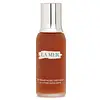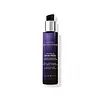What's inside
What's inside
 Key Ingredients
Key Ingredients

 Benefits
Benefits

 Concerns
Concerns

 Ingredients Side-by-side
Ingredients Side-by-side

Water
Skin ConditioningAlcohol Denat.
AntimicrobialYeast Extract
Skin ConditioningLactobacillus Ferment
Skin ConditioningGlycolic Acid
BufferingPropanediol
SolventGlycerin
HumectantSodium Citrate
BufferingButylene Glycol
HumectantGluconolactone
Skin ConditioningAlgae Extract
EmollientSesamum Indicum Seed Oil
EmollientMedicago Sativa Seed Powder
Skin ConditioningHelianthus Annuus Seedcake
AbrasivePrunus Amygdalus Dulcis Seed Meal
AbrasiveEucalyptus Globulus Leaf Oil
PerfumingSodium Gluconate
Skin ConditioningCopper Gluconate
Skin ConditioningCalcium Gluconate
HumectantMagnesium Gluconate
Skin ConditioningZinc Gluconate
Skin ConditioningTocopheryl Succinate
AntioxidantNiacin
SmoothingSesamum Indicum Seed Powder
Skin ConditioningSigesbeckia Orientalis Extract
Skin ConditioningTrametes Versicolor Extract
Castanea Sativa Seed Extract
Skin ConditioningHydrolyzed Rice Extract
Skin ConditioningPisum Sativum Extract
Skin ConditioningBambusa Vulgaris Extract
Skin ConditioningLaminaria Digitata Extract
Skin ProtectingPrunus Mume Fruit Extract
HumectantLaminaria Saccharina Extract
Skin ProtectingEugenia Caryophyllus Flower Extract
AstringentThermus Thermophillus Ferment
Skin ConditioningCaffeine
Skin ConditioningSodium Hyaluronate
HumectantLactic Acid
BufferingSalicylic Acid
MaskingAcetyl Hexapeptide-8
HumectantCamphor
MaskingMenthyl Lactate
MaskingEthylhexylglycerin
Skin ConditioningLecithin
EmollientPPG-5-Ceteth-20
EmulsifyingPoloxamer 407
EmulsifyingPolysorbate 20
EmulsifyingXanthan Gum
EmulsifyingParfum
MaskingLinalool
PerfumingBenzyl Salicylate
PerfumingEugenol
PerfumingHexyl Cinnamal
PerfumingLimonene
PerfumingTartaric Acid
BufferingSodium Hydroxide
BufferingGlucosamine Hcl
Phytic Acid
Disodium EDTA
Potassium Sorbate
PreservativePhenoxyethanol
PreservativeCaramel
Cosmetic ColorantCI 14700
Cosmetic ColorantWater, Alcohol Denat., Yeast Extract, Lactobacillus Ferment, Glycolic Acid, Propanediol, Glycerin, Sodium Citrate, Butylene Glycol, Gluconolactone, Algae Extract, Sesamum Indicum Seed Oil, Medicago Sativa Seed Powder, Helianthus Annuus Seedcake, Prunus Amygdalus Dulcis Seed Meal, Eucalyptus Globulus Leaf Oil, Sodium Gluconate, Copper Gluconate, Calcium Gluconate, Magnesium Gluconate, Zinc Gluconate, Tocopheryl Succinate, Niacin, Sesamum Indicum Seed Powder, Sigesbeckia Orientalis Extract, Trametes Versicolor Extract, Castanea Sativa Seed Extract, Hydrolyzed Rice Extract, Pisum Sativum Extract, Bambusa Vulgaris Extract, Laminaria Digitata Extract, Prunus Mume Fruit Extract, Laminaria Saccharina Extract, Eugenia Caryophyllus Flower Extract, Thermus Thermophillus Ferment, Caffeine, Sodium Hyaluronate, Lactic Acid, Salicylic Acid, Acetyl Hexapeptide-8, Camphor, Menthyl Lactate, Ethylhexylglycerin, Lecithin, PPG-5-Ceteth-20, Poloxamer 407, Polysorbate 20, Xanthan Gum, Parfum, Linalool, Benzyl Salicylate, Eugenol, Hexyl Cinnamal, Limonene, Tartaric Acid, Sodium Hydroxide, Glucosamine Hcl, Phytic Acid, Disodium EDTA, Potassium Sorbate, Phenoxyethanol, Caramel, CI 14700
Water
Skin ConditioningPropylheptyl Caprylate
EmollientPropanediol
SolventGlycolic Acid
BufferingCitric Acid
BufferingSodium Hydroxide
BufferingLactic Acid
BufferingGlycerin
HumectantSalicylic Acid
MaskingArachidyl Alcohol
EmollientAmmonium Acryloyldimethyltaurate/Vp Copolymer
Alcohol
AntimicrobialParfum
MaskingArginine
MaskingPentylene Glycol
Skin ConditioningRhamnose
HumectantArachidyl Glucoside
EmulsifyingC13-14 Isoparaffin
EmollientPropylene Glycol
HumectantPEG-75
HumectantTocopherol
AntioxidantCarnosine
Skin ConditioningDisodium Adenosine Triphosphate
Skin ConditioningFarnesol
PerfumingLaminaria Digitata Extract
Skin ProtectingWater, Propylheptyl Caprylate, Propanediol, Glycolic Acid, Citric Acid, Sodium Hydroxide, Lactic Acid, Glycerin, Salicylic Acid, Arachidyl Alcohol, Ammonium Acryloyldimethyltaurate/Vp Copolymer, Alcohol, Parfum, Arginine, Pentylene Glycol, Rhamnose, Arachidyl Glucoside, C13-14 Isoparaffin, Propylene Glycol, PEG-75, Tocopherol, Carnosine, Disodium Adenosine Triphosphate, Farnesol, Laminaria Digitata Extract
 Reviews
Reviews

Ingredients Explained
These ingredients are found in both products.
Ingredients higher up in an ingredient list are typically present in a larger amount.
Glycerin is already naturally found in your skin. It helps moisturize and protect your skin.
A study from 2016 found glycerin to be more effective as a humectant than AHAs and hyaluronic acid.
As a humectant, it helps the skin stay hydrated by pulling moisture to your skin. The low molecular weight of glycerin allows it to pull moisture into the deeper layers of your skin.
Hydrated skin improves your skin barrier; Your skin barrier helps protect against irritants and bacteria.
Glycerin has also been found to have antimicrobial and antiviral properties. Due to these properties, glycerin is often used in wound and burn treatments.
In cosmetics, glycerin is usually derived from plants such as soybean or palm. However, it can also be sourced from animals, such as tallow or animal fat.
This ingredient is organic, colorless, odorless, and non-toxic.
Glycerin is the name for this ingredient in American English. British English uses Glycerol/Glycerine.
Learn more about GlycerinGlycolic Acid is arguably the most famous alpha hydroxy acid (AHA) with tons of research backing its benefits.
It is found naturally in sugar cane but the form used in skincare is usually synthetic for purity and stability.
Glycolic acid removes the top layer of dead skin cells to allow newer and fresher ones to emerge.
AHAs work by breaking down the structural “glue” that holds old skin cells in place. When that buildup is gone, your skin can renew itself more efficiently.
Research also shows glycolic acid stimulates collagen production, helping to firm and thicken the skin over time. This is one of its biggest advantages over other AHAs.
Overall, glycolic acid helps with:
Fun fact: Glycolic acid boosts skin hydration by helping it produce molecules that increase hyaluronic acid naturally.
To work best, glycolic acid products should have a pH between 3-4 (that’s where exfoliation is most effective but still gentle on skin).
The pH and concentration of a product are key to its effectiveness:
It is normal to feel a slight stinging sensation when using glycolic acid. This usually fades as your skin adjusts.
Because glycolic acid has the smallest molecular size in the AHA family, it can penetrate deeper, which enhances its effectiveness but also makes it more likely to irritate sensitive skin.
If your skin is very sensitive or prone to rosacea, glycolic acid may be too strong; in that case, try milder options like lactic acid or a PHA instead.
Recent studies suggest glycolic acid might even help protect against UV damage. But don’t skip sunscreen! Freshly exfoliated skin is more sensitive to the sun.
Glycolic acid is a skincare superstar. It smooths, brightens, hydrates, and firms the skin. Unless you’re highly sensitive, it’s well worth adding to your routine.
Read more about some other popular AHA's here:
Learn more about Glycolic AcidLactic Acid is another well-loved alpha hydroxy acid (AHA). It is gentler than glycolic acid but still highly effective.
Its main role is to exfoliate the surface of the skin by loosening the “glue” that holds dead skin cells together. Shedding those old cells leads to smoother, softer, and more even-toned skin.
Because lactic acid molecules are larger than glycolic acid, they don’t penetrate as deeply. This means they’re less likely to sting or irritate, making it a great choice for beginners or those with sensitive skin.
Like glycolic acid, it can:
Lactic acid also acts as a humectant (like hyaluronic acid). It can draw water into the skin to improve hydration and also plays a role in the skin's natural moisturizing factor (NMF) in the form of sodium lactate.
Studies show it can boost ceramide production to strengthen the skin barrier and even help balance the skin’s microbiome.
To get results, choose products with a pH between 3-4.
Lower strengths (5-12%) focus on surface exfoliation; higher strengths (12% and up) can reach deeper in the dermis (deeper, supportive layer) to improve skin texture and firmness over time.
Though it was originally derived from milk, most modern lactic acid used in skincare is vegan. It is made through non-dairy fermentation to create a bio-identical and stable form suitable for all formulations.
When lactic acid shows up near the end of an ingredient list, it usually means the brand added just a tiny amount to adjust the product’s pH.
Legend has it that Cleopatra used to bathe in sour milk to help reduce wrinkles.
Lactic acid is truly a gentle multitasker: it exfoliates, hydrates, strengthens, and brightens. It's a great ingredient for giving your skin a smooth, glowing, and healthy look without the harshness of stronger acids.
Read more about some other popular AHA's here:
Learn more about Lactic AcidLaminaria Digitata Extract comes from the dark brown seaweed, Laminaria Digitata. It is a potent antioxidant, which also provides soothing and hydrating benefits.
Many studies show the antioxidant components of Laminaria Digitata to help with anti-inflammation.
This ingredient is rich in amino acids, proteins, sugars, and vitamins. Small amounts of minerals such as phosphorous, iron, potassium, and copper are also found the seaweed.
These components help hydrate and nourish your skin's natural barrier. Having a healthy skin barrier leads to more youthful looking skin and may help reduce the signs of aging.
Laminaria Digitata is found in the northern Atlantic Ocean.
What's the difference between algae and seaweed?
Algae is a broad term that includes seaweed. Not all algae is seaweed.
Parfum is a catch-all term for an ingredient or more that is used to give a scent to products.
Also called "fragrance", this ingredient can be a blend of hundreds of chemicals or plant oils. This means every product with "fragrance" or "parfum" in the ingredients list is a different mixture.
For instance, Habanolide is a proprietary trade name for a specific aroma chemical. When used as a fragrance ingredient in cosmetics, most aroma chemicals fall under the broad labeling category of “FRAGRANCE” or “PARFUM” according to EU and US regulations.
The term 'parfum' or 'fragrance' is not regulated in many countries. In many cases, it is up to the brand to define this term.
For instance, many brands choose to label themselves as "fragrance-free" because they are not using synthetic fragrances. However, their products may still contain ingredients such as essential oils that are considered a fragrance by INCI standards.
One example is Calendula flower extract. Calendula is an essential oil that still imparts a scent or 'fragrance'.
Depending on the blend, the ingredients in the mixture can cause allergies and sensitivities on the skin. Some ingredients that are known EU allergens include linalool and citronellol.
Parfum can also be used to mask or cover an unpleasant scent.
The bottom line is: not all fragrances/parfum/ingredients are created equally. If you are worried about fragrances, we recommend taking a closer look at an ingredient. And of course, we always recommend speaking with a professional.
Learn more about ParfumPropanediol is an all-star ingredient. It softens, hydrates, and smooths the skin.
It’s often used to:
Propanediol is not likely to cause sensitivity and considered safe to use. It is derived from corn or petroleum with a clear color and no scent.
Learn more about PropanediolSalicylic Acid (also known as beta hydroxy acid or BHA) is a well-known ingredient for treating skin that struggles with acne and clogged pores. It exfoliates both the skin's surface and deep within the pores to help clear out buildup, control oil, and reduce inflammation.
Unlike AHAs (alpha hydroxy acids), salicylic acid is oil-soluble. This allows it to penetrate into pores which makes it especially effective for treating blackheads and preventing future breakouts.
Salicylic acid is also known for its soothing properties. It has a similar structure to aspirin and can calm inflamed or irritated skin, making it a good option for acne-prone skin that is also sensitive.
Concentrations of 0.5-2% are recognized by the U.S. FDA as an over-the-counter topical acne product.
It can cause irritation and/or dryness if one's skin already has a compromised moisture barrier, so it's best to focus on repairing that before introducing this ingredient into your routine.
While salicylic acid does not increase sun sensitivity, it’s still important to wear sunscreen daily to protect your skin.
If you are looking for the ingredient called BHA or Butylated Hydroxyanisole, click here.
Learn more about Salicylic AcidSodium Hydroxide is also known as lye or caustic soda. It is used to adjust the pH of products; many ingredients require a specific pH to be effective.
In small amounts, sodium hydroxide is considered safe to use. However, large amounts may cause chemical burns due to its high alkaline.
Your skin has a natural pH and acid mantle. This acid mantle helps prevent harmful bacteria from breaking through. The acid mantle also helps keep your skin hydrated.
"Alkaline" refers to a high pH level. A low pH level would be considered acidic.
Learn more about Sodium HydroxideWater. It's the most common cosmetic ingredient of all. You'll usually see it at the top of ingredient lists, meaning that it makes up the largest part of the product.
So why is it so popular? Water most often acts as a solvent - this means that it helps dissolve other ingredients into the formulation.
You'll also recognize water as that liquid we all need to stay alive. If you see this, drink a glass of water. Stay hydrated!
Learn more about Water